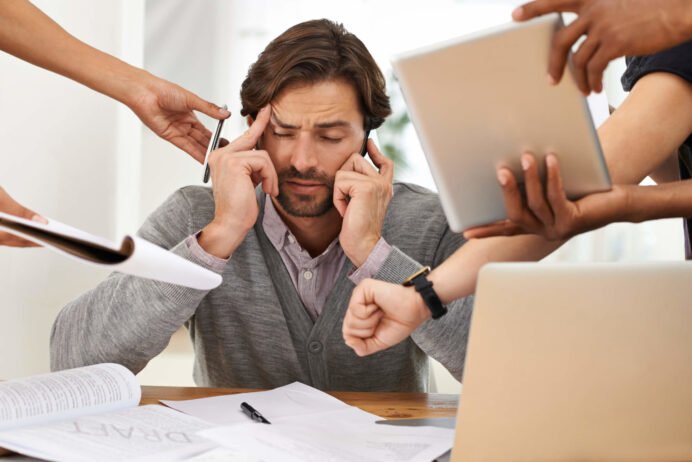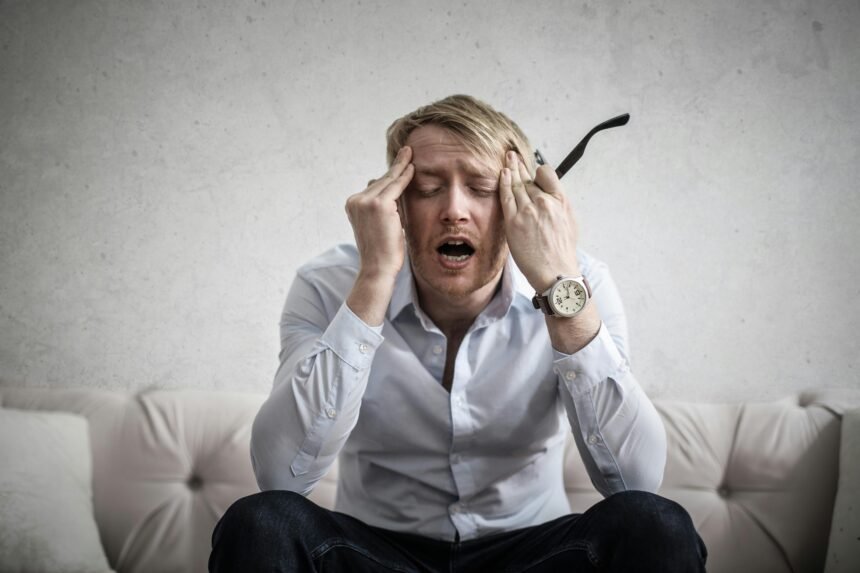Choosing what to wear can feel like a simple daily task for some, but for others, it sparks overwhelming stress, self-doubt, or even panic. This phenomenon, often called “outfit anxiety,” is more than just indecision—it’s a real emotional response tied to self-image, societal pressures, and mental health. While not a formal clinical diagnosis, outfit anxiety can significantly impact daily life, especially for those with anxiety disorders or body image concerns. In this blog, we explore what outfit anxiety is, its signs and causes, expert insights, and practical steps to manage it, backed by research and professional advice. If picking an outfit feels like a battle, you’re not alone—here’s how to navigate it.
What Is Outfit Anxiety? Understanding the Experience
Outfit anxiety refers to the distress, worry, or overwhelm experienced when choosing what to wear, often driven by fears of judgment, inadequacy, or not fitting societal expectations. It’s not listed in the DSM-5 but aligns with symptoms of social anxiety, generalized anxiety disorder (GAD), or body dysmorphic disorder (BDD) when severe. It’s particularly common in situations with high social stakes—like job interviews, dates, or public events—where appearance feels tied to acceptance.
Research suggests outfit anxiety is widespread: A 2024 Psychology of Popular Media study found that 30% of young adults feel significant stress about clothing choices, linked to social media’s influence on self-perception. For some, it’s a fleeting worry; for others, it’s debilitating, leading to avoidance or excessive time spent on appearance. It’s often amplified by cultural pressures, fast fashion trends, and curated online personas.
Signs You Might Have Outfit Anxiety


How do you know if your clothing-related stress is more than typical indecision? Look for these signs:
- Emotional Symptoms:
- Overwhelming worry about being judged for your outfit.
- Feeling inadequate or “not good enough” when choosing clothes.
- Panic or anxiety attacks triggered by dressing for events.
- Behavioral Signs:
- Spending excessive time (e.g., >30 minutes) choosing an outfit or changing repeatedly.
- Avoiding social events due to clothing-related stress.
- Over-relying on others’ opinions or seeking constant reassurance about appearance.
- Physical Symptoms:
- Sweating, racing heart, or nausea when deciding what to wear.
- Fatigue from mental effort spent on clothing choices.
- Cognitive Patterns:
- Negative self-talk, like “I look terrible in everything” or “Everyone will notice my flaws.”
- Obsessive focus on body image or perceived imperfections tied to clothing.
If these persist or interfere with daily life, they may signal underlying anxiety or body image issues.
Causes: Why Does Outfit Anxiety Happen?
Outfit anxiety stems from a mix of psychological, social, and cultural factors:
- Social Media and Comparison: Platforms like Instagram showcase idealized images, fueling pressure to look “perfect.” A 2025 study linked social media use to a 20% increase in appearance-related anxiety.
- Body Image Issues: Low self-esteem or conditions like BDD amplify distress about clothing fit or style.
- Societal Expectations: Cultural norms around beauty, professionalism, or gender presentation create fear of “getting it wrong.”
- Perfectionism: High-achievers or those with anxiety disorders may obsess over outfits as an extension of control.
- Past Experiences: Bullying, criticism, or trauma related to appearance can heighten clothing-related fears.
Women, young adults, and those in image-conscious professions (e.g., fashion, media) are particularly vulnerable, per a 2024 Journal of Social Psychology study.


Expert Opinions: What Professionals Say
Mental health and style experts validate outfit anxiety as a real issue and offer insights:
- Dr. Amy McCart (Anxiety and Depression Association): Notes that outfit anxiety often ties to social anxiety or BDD, where clothing becomes a focal point for deeper fears of rejection. She recommends CBT to reframe thoughts.
- Dr. Dawnn Karen (Fashion Psychologist): Author of Dress Your Best Life, Karen emphasizes clothing as a tool for self-expression, not stress. She suggests “mood dressing” to align outfits with emotional needs.
- Dr. Lisa Damour (Psychologist): Highlights that outfit anxiety reflects societal pressure to conform. She advocates mindfulness to reduce overthinking and build self-acceptance.
- 2024 Clinical Psychology Review: Found that CBT reduces appearance-related anxiety by 60-70% in 8-12 weeks, especially when paired with exposure techniques.
How to Proceed: Practical Steps to Manage Outfit Anxiety
If outfit anxiety is affecting you, here’s an expert-backed plan to regain control:
- Simplify Your Wardrobe:
- Build a capsule wardrobe (10-15 versatile pieces) to reduce choices. A 2023 study found this cuts decision fatigue by 25%.
- Choose neutral colors or styles you feel confident in to minimize stress.
- Plan outfits the night before to avoid morning overwhelm.
- Reframe Negative Thoughts:
- Use CBT techniques: Challenge thoughts like “I look bad” with evidence (e.g., “I’ve received compliments in this”).
- Practice affirmations, like “My worth isn’t my outfit,” to build self-esteem.
- Limit Social Media Exposure:
- Reduce time on platforms like Instagram that trigger comparison. A 2024 study showed cutting social media by 1 hour/day lowers anxiety by 20%.
- Follow body-positive or practical style accounts for inspiration.
- Practice Mindfulness:
- Try 5-minute meditation or breathing exercises before choosing outfits to calm anxiety. Apps like Calm help, reducing stress by 15%.
- Focus on how clothes feel (comfort, confidence) rather than external validation.
- Seek Professional Help:
- If anxiety persists, consult a therapist for CBT or exposure therapy, especially if tied to social anxiety or BDD.
- Work with a fashion psychologist or stylist to rebuild confidence in clothing choices.
- Build Support:
- Share concerns with trusted friends or join body-positive communities to reduce isolation.
- Engage with resources like the National Alliance on Mental Illness (NAMI) for mental health support.
- Simplify Your Wardrobe:
When to Seek Help
If outfit anxiety leads to avoiding events, persistent distress, or obsessive thoughts about appearance for weeks, consult a therapist or psychiatrist. Signs like panic attacks or suicidal thoughts require immediate help—contact crisis lines like 988 (US). Persistent symptoms may indicate underlying conditions like social anxiety or BDD needing targeted treatment.
Conclusion: Outfit Anxiety Is Real, But Manageable
Outfit anxiety is a valid emotional response, driven by societal pressures, social media, and personal insecurities, affecting 30% of young adults. Experts like Dr. Karen emphasize using clothing for empowerment, not stress, while therapy and practical steps like capsule wardrobes can ease the burden. You’re not defined by your outfit—start with one strategy, like planning outfits ahead or limiting social media. Resources like NAMI or mindfulness apps can support you. What’s one step you’ll try to reduce outfit stress? Share below to inspire others!


